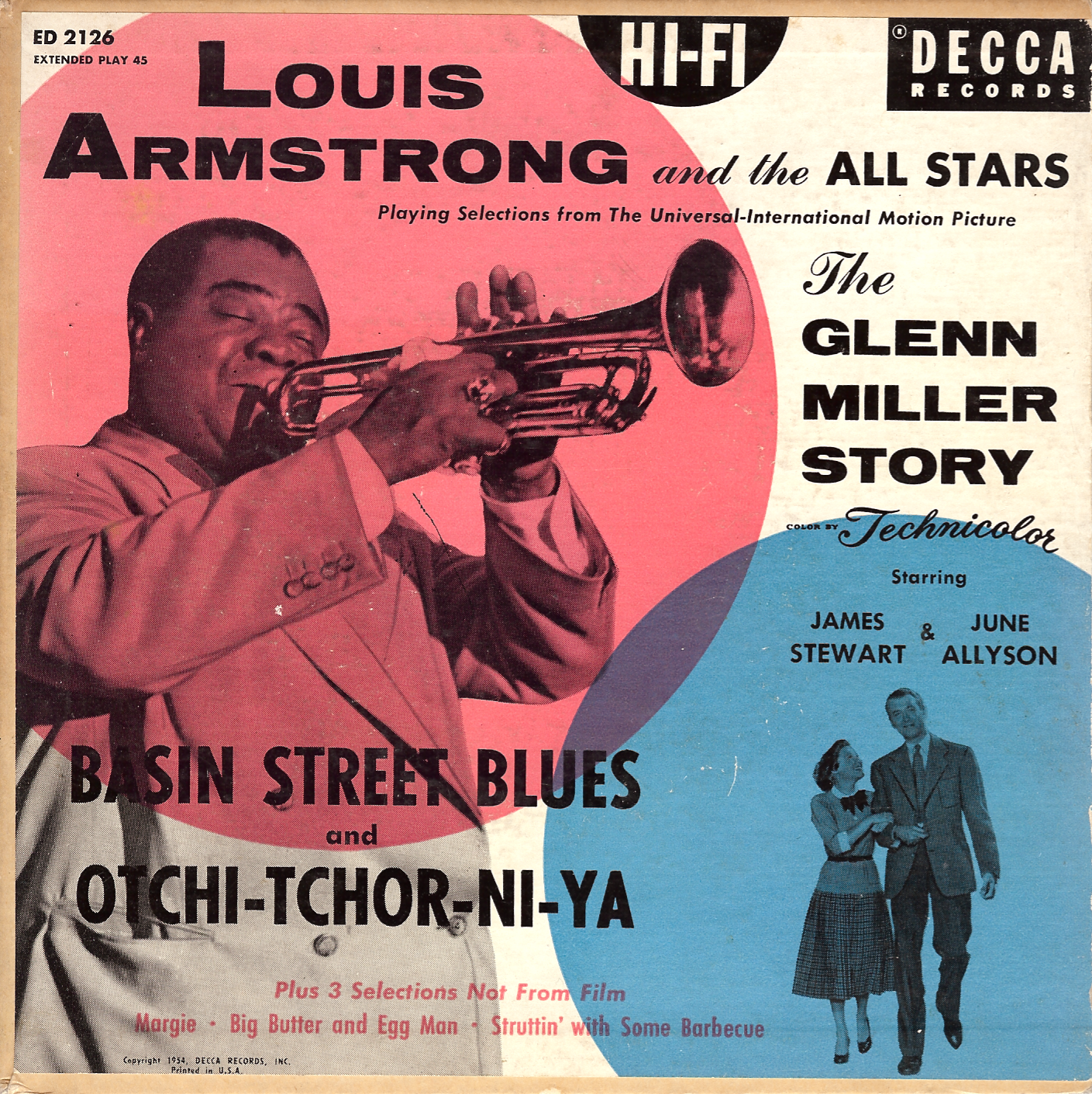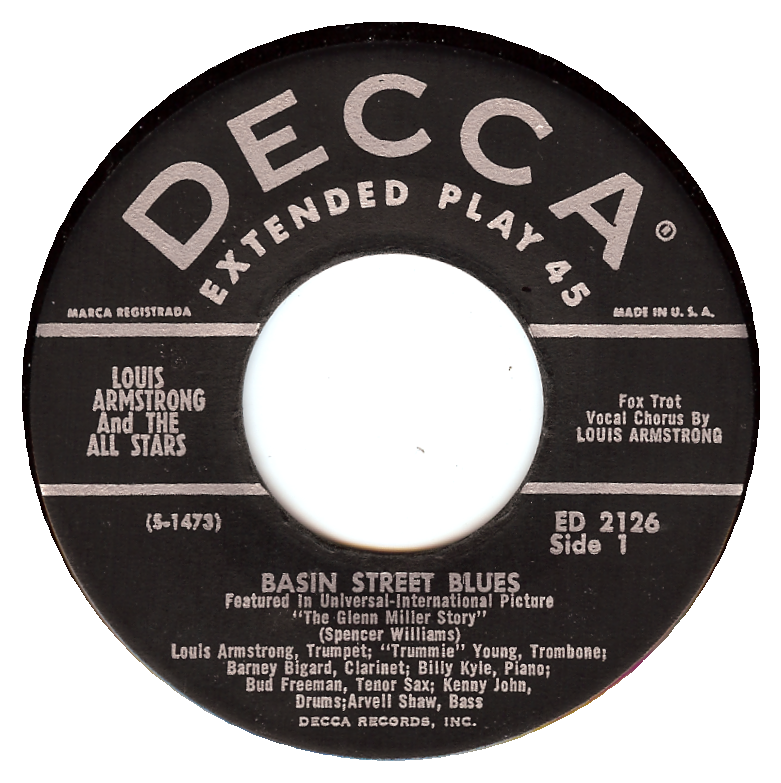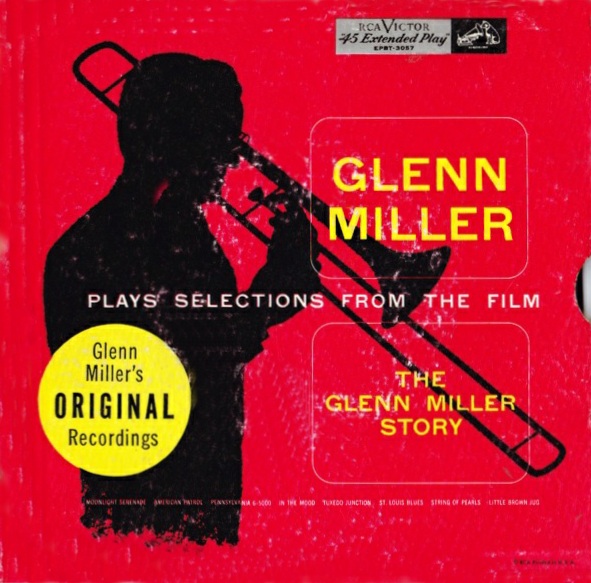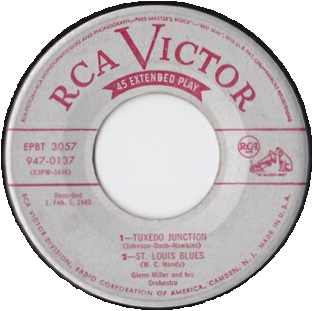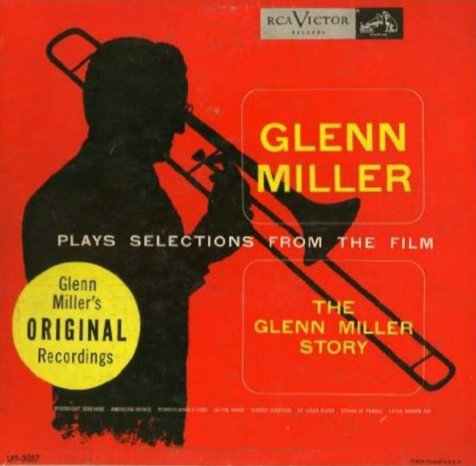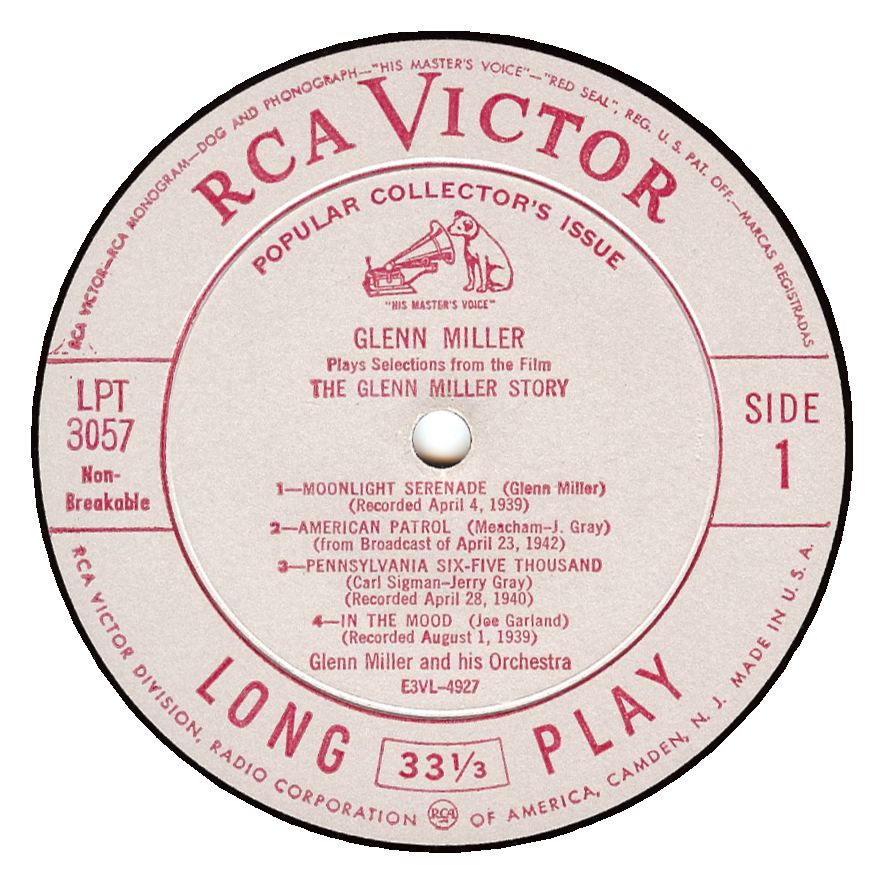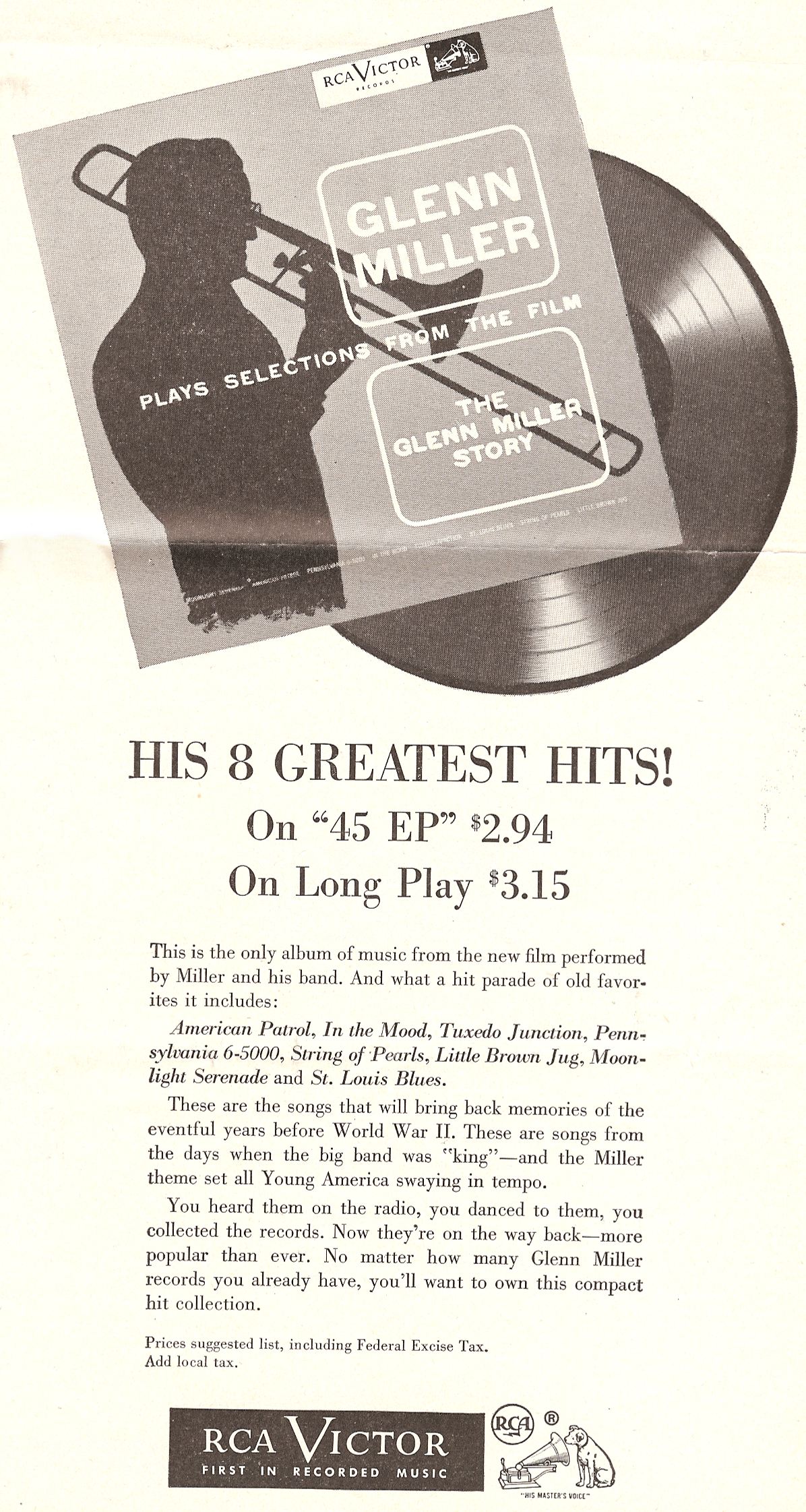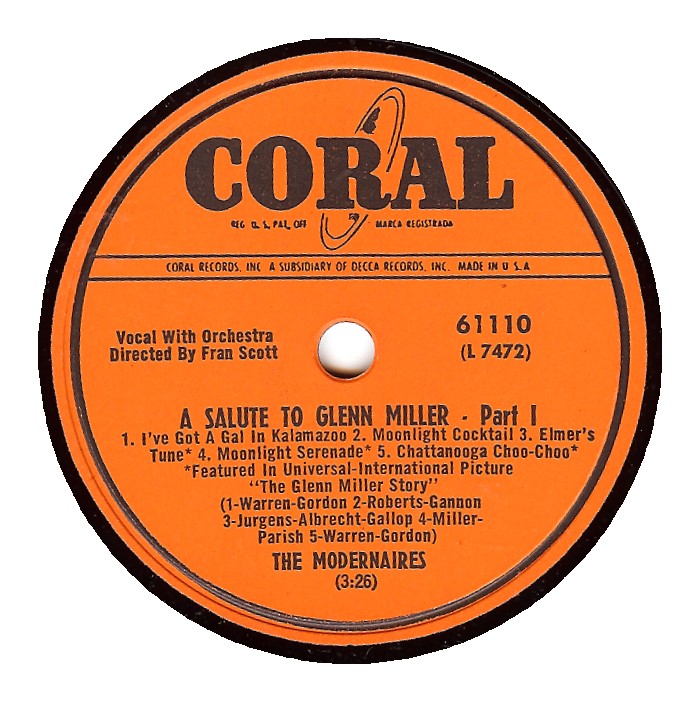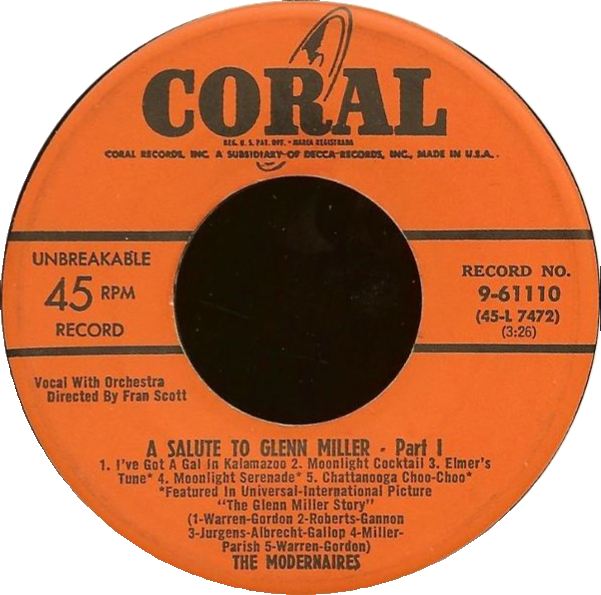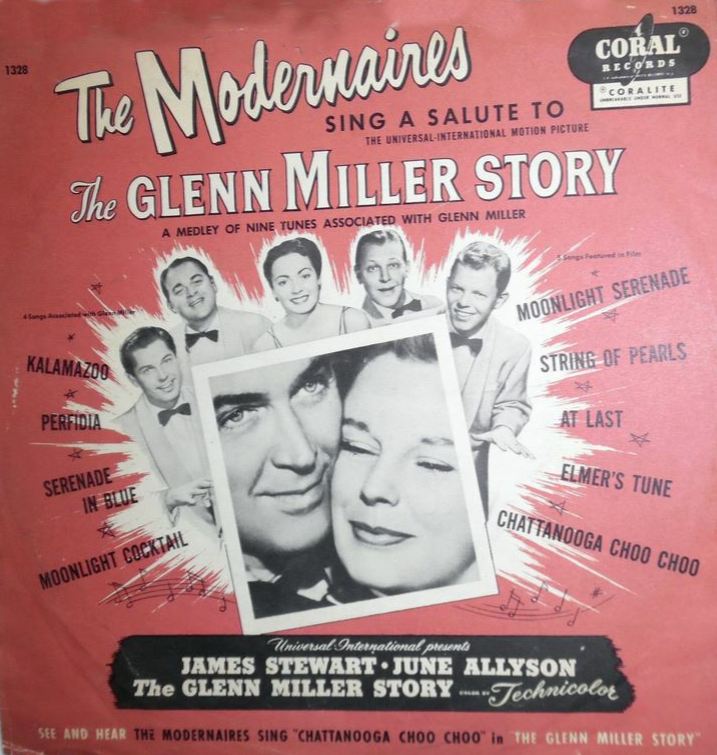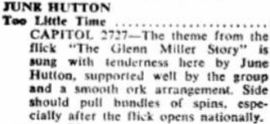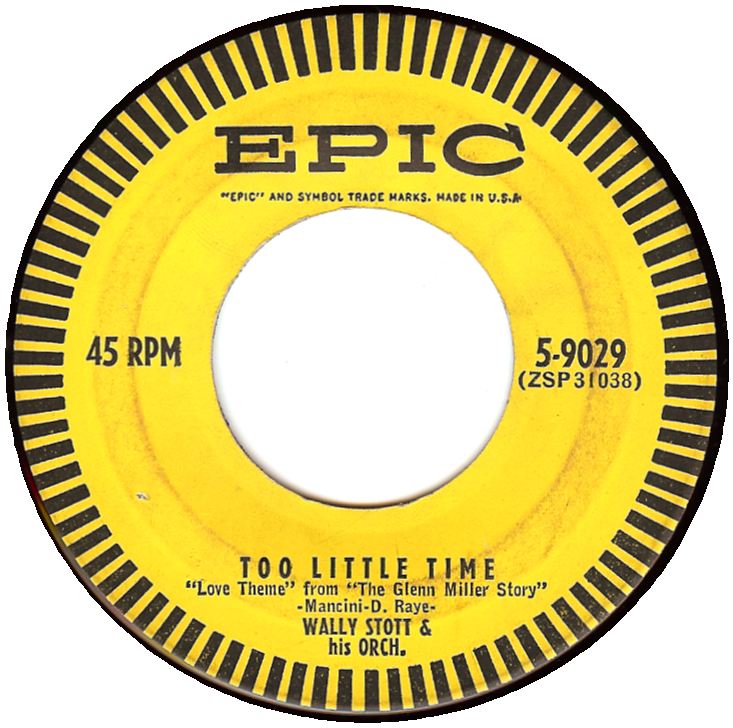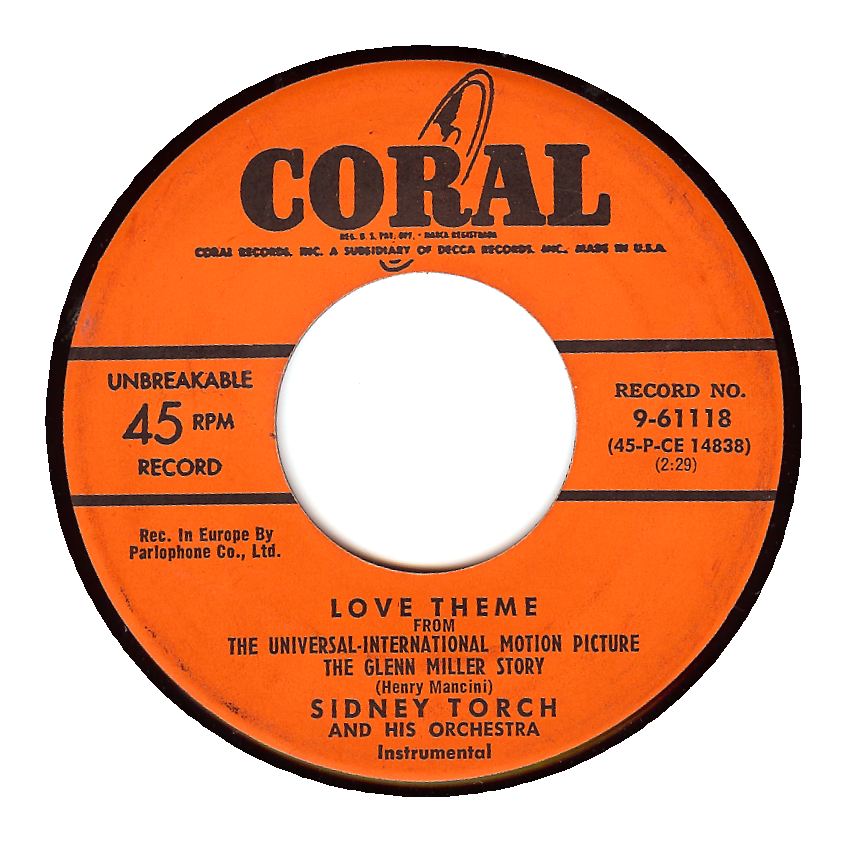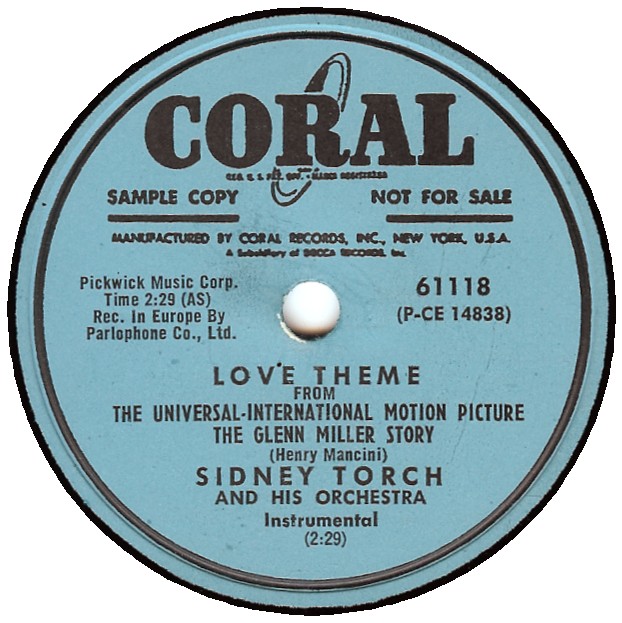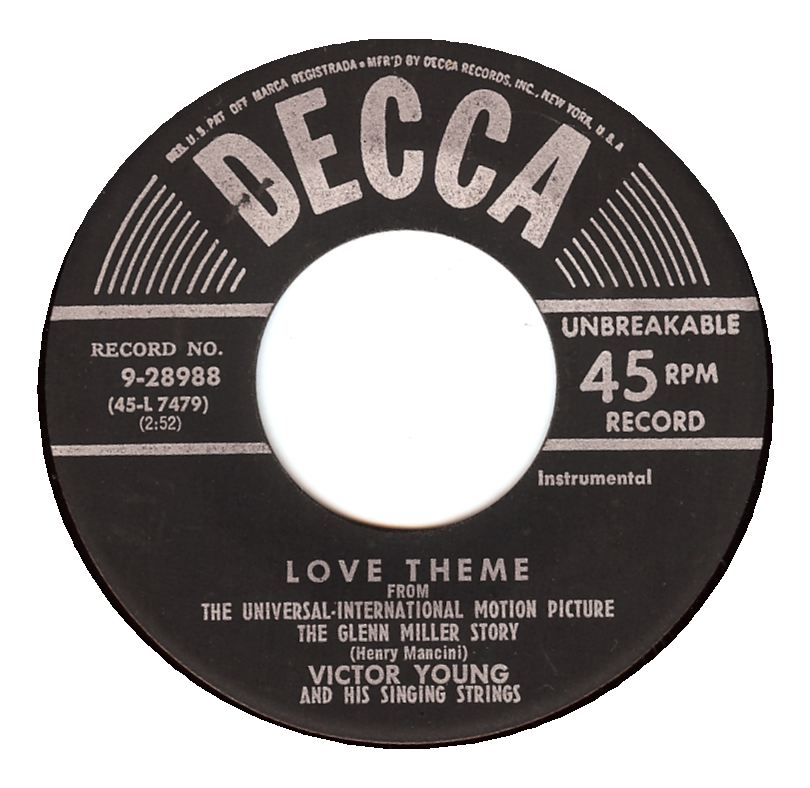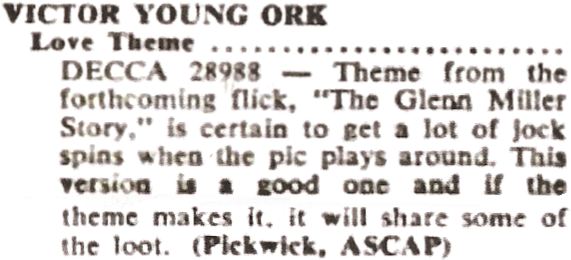Besides the actual soundtrack recordings discussed in the first blog, there were also a number of related releases which we will discuss here. First, Decca issued an EP featuring Louis Armstrong’s two songs from the film. The sleeve even carried the now familiar photo of Jimmy Stewart and June Allyson.
Decca ED 2126 (1954) – Louis Armstrong & the All Stars Playing Selections from the Universal-International Motion Picture “The Glenn Miller Story”
To capitalize on the popularity of the film, RCA Victor also released the original songs that were on the soundtrack album by Glenn Miller himself. The EP and 10-inch album spent a total of 78 weeks on the Billboard album chart. The 10-inch was #1 for 11 weeks and the EP was #1 for 9 weeks. Both the releases had the same cover design.
RCA Victor EPBT-3057 (double EP)
RCA Victor LPT-3057 (10-inch album)
The songs included on these two releases were:
Moonlight Serenade
American Patrol
In the Mood
Tuxedo Junction
St. Louis Blues
A String of Pearls
Little Brown Jug
Pennsylvania 6-5000
RCA Victor also advertised the album in Billboard:
Coral Records rush released a Glenn Miller medley by The Modernaires, a vocal group long associated with the Miller Orchestra.
Coral 1328 (78 RPM)/9-1328 (45 RPM)(1954) – The Modernaires Sing a Salute to The Glenn Miller Story
Both were issued with a picture sleeve which advertised the film and carried a photo of Stewart and Allyson:
The disc featured a medley of nine tunes associated with Glenn Miller, including:
Kalamazoo
Perfidia
Serenade in Blue
Moonlight Cocktail
Moonlight Serenade
A String of Pearls
At Last
Elmer’s Tune
Chattanooga Choo Choo
The members of the group were:
Hal Dickinson
Paula Kelly (Dickinson’s wife)
Ralph Brewster
Johnny Drake
Fran Scott
Finally, we come to the song known alternately as Love Theme from The Glenn Miller Story or Too Little Time. Henry Mancini wrote the music for the song, while Don Raye wrote the lyrics. The song does not appear on any of the Decca soundtrack recordings, but was recorded and released by no fewer than five artists in the U.S. Possibly because there were so many versions, the song failed to chart. Two of the recordings were vocals, while the other three were instrumental. We’ll include audio for one vocal and one instrumental. We’ll look at them here in alphabetical order, by artist.
First up is June Hutton with The Boys Next Door and The Stordahl Orchestra.
Capitol F2727 (45 RPM)/2727 (78 RPM)
Capitol pushed the single hard, including placing large ads, like the one below, in Billboard (February 13, 1954).
 Billboard also gave the single a good review in its February 13, 1954 edition:
Billboard also gave the single a good review in its February 13, 1954 edition:
The next version was by up and coming singer, Steve Lawrence.
King 45-1315
It was also issued as a 10-inch, 78 RPM record in the U.S. and England.
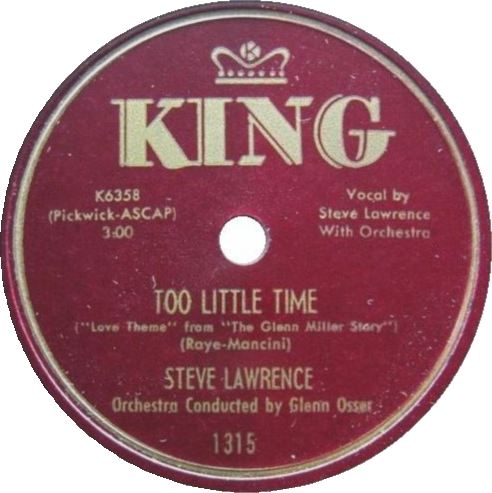
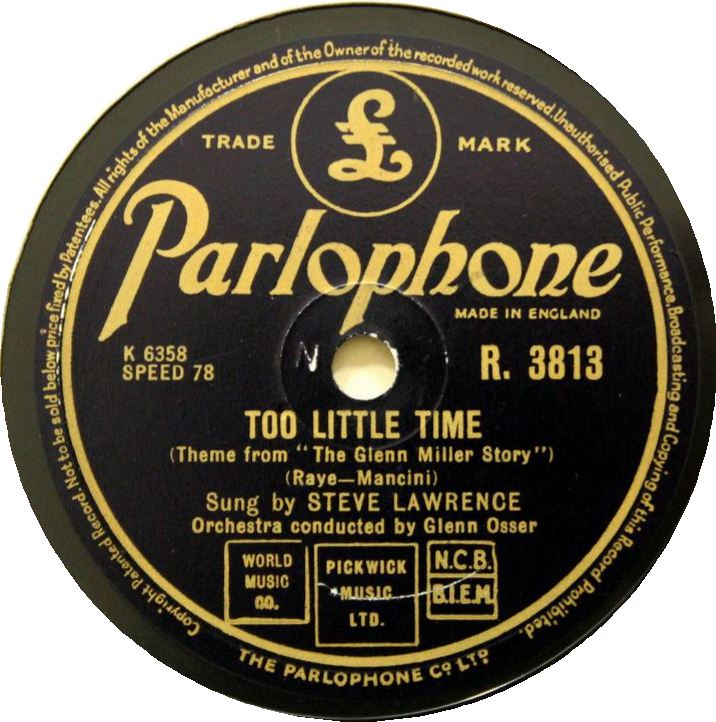
Again, the Billboard review (February 6, 1954) was a good one.
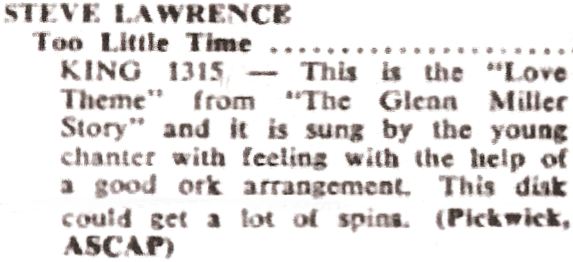 A version was also released by Wally Stott and His Orchestra.
A version was also released by Wally Stott and His Orchestra.
Epic 5-9029
This instrumental version was reviewed in the April 3, 1954 edition of Billboard.
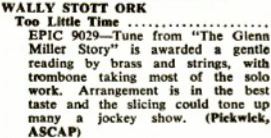 The next version, also an instrumental, was actually recorded first in England for Parlophone Records and then brought to the United States. The artist was Sidney Torch and His Orchestra. A small story appeared in the January 20, 1954 edition of Billboard which explained how the record got to be issued in the U.S.
The next version, also an instrumental, was actually recorded first in England for Parlophone Records and then brought to the United States. The artist was Sidney Torch and His Orchestra. A small story appeared in the January 20, 1954 edition of Billboard which explained how the record got to be issued in the U.S.
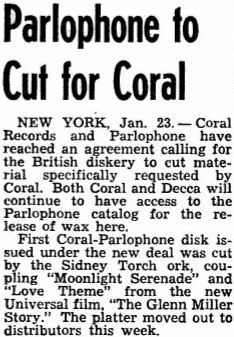 Coral 9-61118 (45 RPM)/61119 (78RPM)
Coral 9-61118 (45 RPM)/61119 (78RPM)
Billboard’s (February 6, 1954) review was not quite as glowing as it had been for the previous releases.
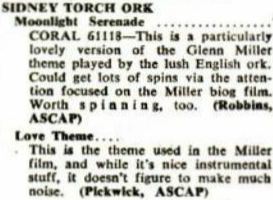 The final version was another instrumental recorded by Victor Young and His Singing Strings.
The final version was another instrumental recorded by Victor Young and His Singing Strings.
Decca 9-28988
Billboard (January 6, 1954) offered up a good review for the popular artist, but still the record failed to chart.
